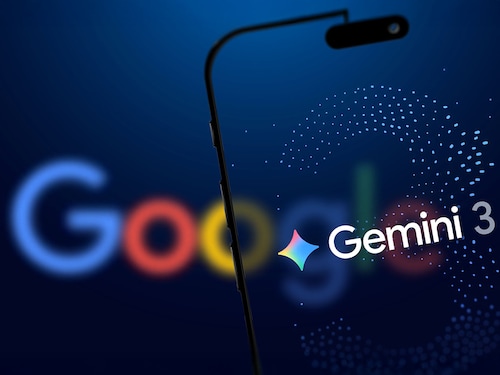Google’s Gemini 3 Launch: Why it matters
CEO Sundar Pichai underlines the evolution of its AI platform, from one that would just read text and images to one that can now ‘read the room’


With the launch of Gemini 3 on Tuesday, Google is making a play to redefine how we search, code, and interact with machines. This isn’t about answering questions faster—it’s about turning Google into an AI-native platform where queries become apps, developers manage agents instead of writing code, and personalisation goes from buzzword to operating principle.
The stakes? Nothing less than the future of the web, and Google’s dominance in it.
“Nearly two years ago, we kicked off the Gemini era, one of our biggest scientific and product endeavours ever undertaken as a company,” Sundar Pichai wrote in a blog on Tuesday. “Since then, it’s been incredible to see how much people love it. AI Overviews now have 2 billion users every month. The Gemini app surpasses 650 million users per month, more than 70 percent of our Cloud customers use our AI, 13 million developers have built with our generative models, and that is just a snippet of the impact we’re seeing.”
Gemini’s evolution has been fast. Gemini 3 combines features of its predecessors—like multimodality (ability to handle text, images, audio, video etc) and agentic capabilities—and adds state-of-the-art personalisation. “It’s amazing to think that, in just two years, AI has evolved from simply reading text and images to reading the room,” Pichai wrote in the blog. It means Gemini 3 promises to understand not just what you ask, but why you’re asking.
For 25 years, Google Search has been the front door to the internet. Gemini 3 is set to change that—integrated into AI Mode, the new model introduces Generative UI, a feature that turns static results into dynamic, interactive experiences. For instance, instead of typing a problem and getting a list of links, Gemini 3 can generate an interactive simulation right inside your search results—complete with visual trajectories and explanatory notes. Or, if you ask, “Plan a 5-day trip to Kyoto under $1,500,” the search will return a dynamic itinerary with maps, hotel options, and budget breakdowns, all in one view.
In the company blog, Josh Woodward, who leads product for Gemini, calls its third iteration “our best vibe coding model ever”. What does that mean? In Google’s Canvas environment, developers can sketch out app ideas in natural language, and Gemini 3 turns those ideas into full-featured applications with richer layouts, smarter logic and intuitive without a human designer in the loop.
“The entire experience has gotten smarter,” Woodward wrote. “You’ll notice the responses are more helpful, better formatted and more concise.” That matters because vibe coding isn’t about syntax—it’s about feel, and Gemini 3 aims to capture that.
Also Read: Quantum Dreams and AI realities: Sundar Pichai’s next big leap
Google Antigravity, which was also launched alongside Gemini 3, is an agent-first coding environment where AI agents autonomously plan, code, test, and verify across editor, terminal, and browser. Built on VS Code—a free, lightweight code editor by Microsoft—it adds orchestration layers that let developers manage workflows rather than write every line of code.
“We want Antigravity to be the home base for software development in the era of agents. Our vision is to ultimately enable anyone with an idea to experience liftoff and build that idea into reality,” stated the Antigravity team in its blog. This is Google’s answer to the question: What happens when coding becomes conversational? Antigravity positions Gemini 3 as the backbone of agentic development, where software builds itself under human supervision.
On the enterprise side, Gemini 3 promises multimodal reasoning at scale—analysing X-rays for healthcare, inspecting factory images for manufacturing, automating procurement workflows for finance. More than 70 percent of Google Cloud customers already use AI; Gemini 3 aims to make those integrations deeper and more autonomous.
Demis Hassabis, CEO of Google DeepMind, frames Gemini 3 as “another big step on the path toward AGI”. A new Deep Think mode pushes performance even further, available first to safety testers before rolling out to Google AI Ultra subscribers.
These are signals in the AI arms race. OpenAI’s GPT-5.1 and Anthropic’s Claude 4.5 are formidable rivals, but Gemini 3’s multimodality and agentic edge gives Google a narrative: We’re not just chasing artificial general intelligence (AGI), we’re building the infrastructure for it. For perspective, AGI is still a theoretical notion where AI can do almost everything like a human, and not just one specific job like today’s AI models.
The Gemini app now supports generative interfaces—rich, visual layouts that adapt to your prompt. It also introduces Gemini Agent, capable of multi-step tasks like cleaning your inbox, planning a trip, or organising a project. This is Google’s vision of AI as a universal assistant, not just a chatbot.
Pichai emphasises personalisation: “Gemini 3 is much better at figuring out the context and intent behind your request, so you get what you need with less prompting.”
Why does Gemini 3 matter beyond features? Because it signals a shift in Google’s AI strategy—from research-first to monetisation-first. By embedding Gemini 3 into revenue-generating products on day one, Google is accelerating the path from breakthrough to business model.
This comes amid a broader industry trend: Big Tech is projected to spend $600 billion on AI infrastructure this year. For Google, Gemini 3 isn’t just a product; it’s a platform to justify that spend and defend its core businesses against disruption.
First Published: Nov 19, 2025, 18:29
Subscribe Now